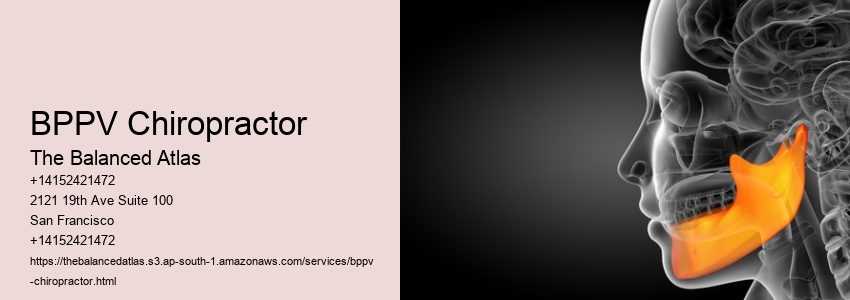

Vertigo occurs suddenly, causing a feeling of internal or external spinning, typically brought on by moving the head. While dizziness may lead to faintness, lightheadedness, or a sense of imbalance, vertigo is notably more severe and confusing. This condition can be extremely disabling, complicating everyday activities such as walking, standing, or even just sitting down. Vertigo happens due to a disruption in the body's spatial awareness, creating confusion and a false impression of movement. The differentiation between vertigo and dizziness is crucial, as it helps in identifying the underlying cause and determining the appropriate treatment. Both conditions share a common thread: they are often linked to issues within the body’s balance systems, which include the visual, vestibular, and proprioceptive systems, all of which play a role in maintaining equilibrium and orientation.
The body’s ability to maintain balance is the result of a highly sophisticated coordination between several key systems. Through the eyes, the visual system delivers vital information to the brain about depth, distance, and movement, enabling safe navigation of our environment. Housed in the inner ear, the vestibular system monitors head position and movement, providing the brain with critical information about balance and spatial orientation. Lastly, the proprioceptive system, which includes receptors in the muscles and joints, helps the brain understand the body's position in space and how to move appropriately. These systems must work together seamlessly to maintain balance and prevent falls. When these systems transmit mixed or inaccurate signals to the brain, confusion can ensue, manifesting as dizziness, loss of coordination, and vertigo. A deep understanding of how these systems interact is crucial for the diagnosis and treatment of balance disorders.
The posture of the neck is crucial for balance and can have a substantial effect on the occurrence of vertigo and dizziness. Bad neck posture, commonly caused by long periods of sitting, poor ergonomics, or injuries like whiplash, can misalign the cervical spine. The cervical spine, particularly the upper neck, houses crucial nerves and blood vessels that are responsible for sending signals to the brain about head and body position. When these signals are disrupted due to poor posture or neck trauma, the brain may receive mixed messages, leading to symptoms of dizziness and vertigo. Following traumatic events such as car accidents, which frequently cause whiplash, individuals often suffer from dizziness that becomes worse with even minor head movements. This occurs because the trauma can misalign the neck, disrupting the flow of information between the body and the brain. Correcting neck posture with chiropractic care can relieve these symptoms, making it an essential part of treating vertigo sufferers.
An often-missed but common cause of vertigo and dizziness is misalignment in the upper neck, especially in the Atlas vertebra, also called C1. The Atlas, the first cervical vertebra, is located at the skull's base and is crucial for head support and movement. The proper alignment of this vertebra is critical for the brain’s balance centers to function correctly. But when the Atlas is out of alignment, it can cause a series of neurological issues. Misalignment here exerts undue stress on the brainstem, essential for sending signals between the brain and the rest of the body. The resultant stress can lead to postural distortions throughout the body, including a raised shoulder, a tilted pelvis, and other compensatory changes in posture. These imbalances don’t just impact balance—they can also lead to chronic pain and discomfort. Therefore, correcting upper neck misalignments is crucial for restoring balance and alleviating the symptoms of vertigo and dizziness.
Through the NUCCA (National Upper Cervical Chiropractic Association) protocol, chiropractic care provides a specialized and non-invasive method for addressing vertigo and dizziness. The NUCCA approach centers on the precise adjustment of the Atlas vertebra, which is vital for ensuring correct neurological signals between the brain and the rest of the body. This gentle adjustment technique corrects misalignments without adding strain or discomfort. By restoring the proper alignment of the head and neck, the NUCCA approach helps reduce the stress on the brainstem, which in turn can alleviate the symptoms of vertigo and dizziness. The NUCCA protocol goes beyond mere symptom relief, targeting the root cause to ensure the body can maintain its natural balance and coordination. The individualized nature of the NUCCA protocol makes it a safe and effective treatment option for those with vertigo, offering the promise of long-term relief and a better quality of life.
Visible postural imbalances often indicate deeper problems in the cervical spine, particularly upper neck misalignments. Imbalances like a high shoulder, an uneven pelvis, or forward head posture are more than just cosmetic issues—they signal underlying neurological disruptions that can cause vertigo and dizziness. Chiropractic care aims to correct these postural distortions by addressing their root cause, which is often found in the alignment of the cervical spine. Using thorough assessments and imaging like x-rays, chiropractors can pinpoint the exact misalignment and create a specific treatment plan. Adjustments are then made to realign the spine, which not only improves posture but also enhances overall neurological function. This approach not only alleviates vertigo symptoms but also fosters better physical health by ensuring the body is correctly aligned and operating at its best.
Chiropractic care provides a holistic and natural solution for those suffering from vertigo and dizziness, offering more than just symptom relief. By focusing on the alignment of the upper neck, chiropractors can directly address the root cause of these debilitating conditions, providing long-term relief and improved quality of life. The benefits of chiropractic care extend far beyond the alleviation of vertigo symptoms. Correct spinal alignment facilitates better neurological communication between the brain and body, which can lead to improved physical and mental well-being. Moreover, chiropractic adjustments enhance posture, reduce pain, and increase mobility, allowing easier participation in daily activities without discomfort or the fear of dizziness. In San Francisco, individuals struggling with vertigo may find chiropractic care, particularly through specialized approaches such as the NUCCA protocol, to be transformative, offering a safe, non-invasive, and effective path to recovery.